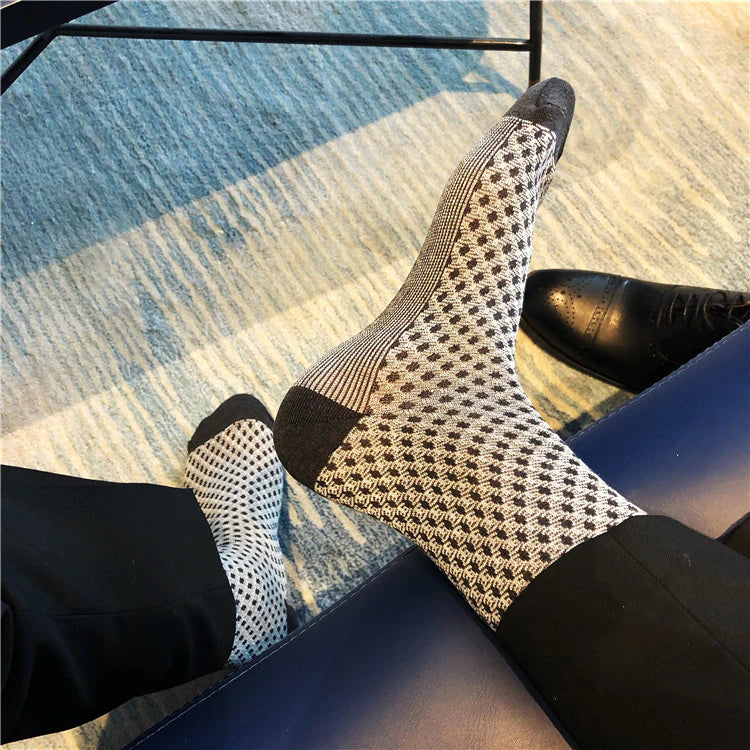
The History of Socks - Sheer, Cotton, Formal. Casual
Share
SOCK is an item of clothing worn on the feet. The foot is among the heaviest producers of sweat in the body, able to produce over a pint of perspiration per day. Socks help to absorb this sweat and draw it to areas where air can evaporate the perspiration. In cold environments, socks decrease the risk of frostbite. Its name is derived from the loose-fitting slipper, called a soccus in Latin, worn by Roman comic actors.
Socks have evolved over the centuries from the earliest models which were made from animal skins gathered up and tied around the ankles. In the 8th century BC, the Ancient Greeks wore socks from matted animal hair for warmth. The Romans also wrapped their feet with leather or woven fabrics. By the 5th century AD, socks called "puttees" were worn by holy people in Europe to symbolize purity. By 1000 AD, socks became a symbol of wealth among the nobility. From the 16th century onwards, an ornamental design on the ankle or side of a sock has been called a clock. How interesting huh?
Shared from: International Male 2022
